By Rebecca Ingram |
15 Oct 2024
Up Close and Personal: Portrait Miniatures in Context
Compton Verney’s new exhibition, ‘The Reflected Self: Portrait Miniatures 1540-1850’, co-curated by Emma Rutherford of The Limner Company, tells the history of the portrait miniature with this continuity in mind. From a remarkable pair of portrait miniatures that would have been held by Queen Elizabeth I herself, to the daguerreotype and today’s ‘selfie’, the exhibition examines the function of portrait miniatures and this most personal form of portraiture.
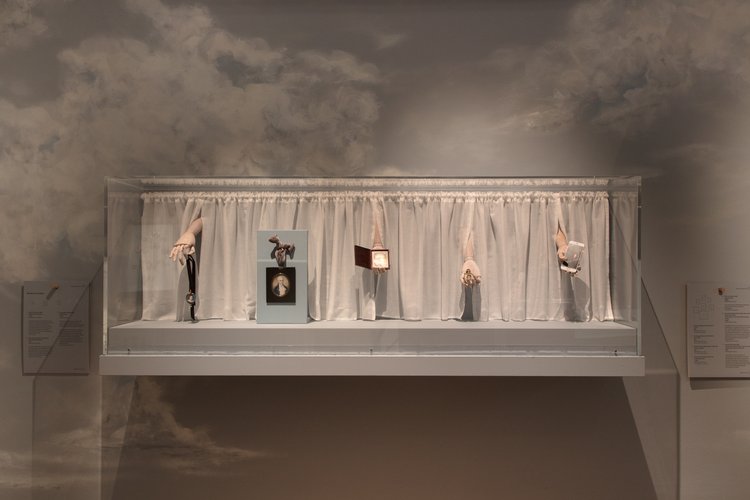
Installation view of The Reflected Self: Portrait Miniatures 1540-1850 © Compton Verney, photo by Jamie Woodley
The portrait miniature has its origins in illuminated manuscripts. The term ‘miniature’ did not originally refer to the size, but derives from the Latin word miniare - the red lead paint used by manuscript illuminators. Rulers might have their image incorporated in a manuscript, representing their authority in the same way as a wax seal.
It was during the early 16th century that small-scale portraits came to function apart from the manuscript, used in diplomacy and marriage negotiations. While a diplomatic portrait might sound lofty, the intention was personal: a miniature held in one’s hand creates a connection more readily than a stately portrait hung on the wall – attested by the account of Queen Elizabeth I kissing a miniature of Mary, Queen of Scots in the presence of the Scottish ambassador.
Miniatures could also inspire devotion of another kind. The giving of one’s portrait quickly became part of the courtship ritual that would last for centuries. Elizabethan miniatures epitomise the romantic and chivalric culture of the age, the sitters often appear distinctly flirtatious or forlorn, and some contain messages in cryptic imagery or poetic phrases that dance around the border in golden calligraphy.
Whether they depicted a monarch or a loved one, miniatures were intended to be kept on one’s person all the time. Small and often housed in a locket of some kind, they were portable and robust enough to be worn on the body. The recipient’s relationship with the sitter would determine whether the miniature was worn openly or concealed. The black string necklaces commonly worn by women in the Elizabeth and Jacobean periods would often have a love-token such as a miniature attached, hidden in their décolletage beneath the wearer’s bodice. The intimacy of this gesture need not be explained.
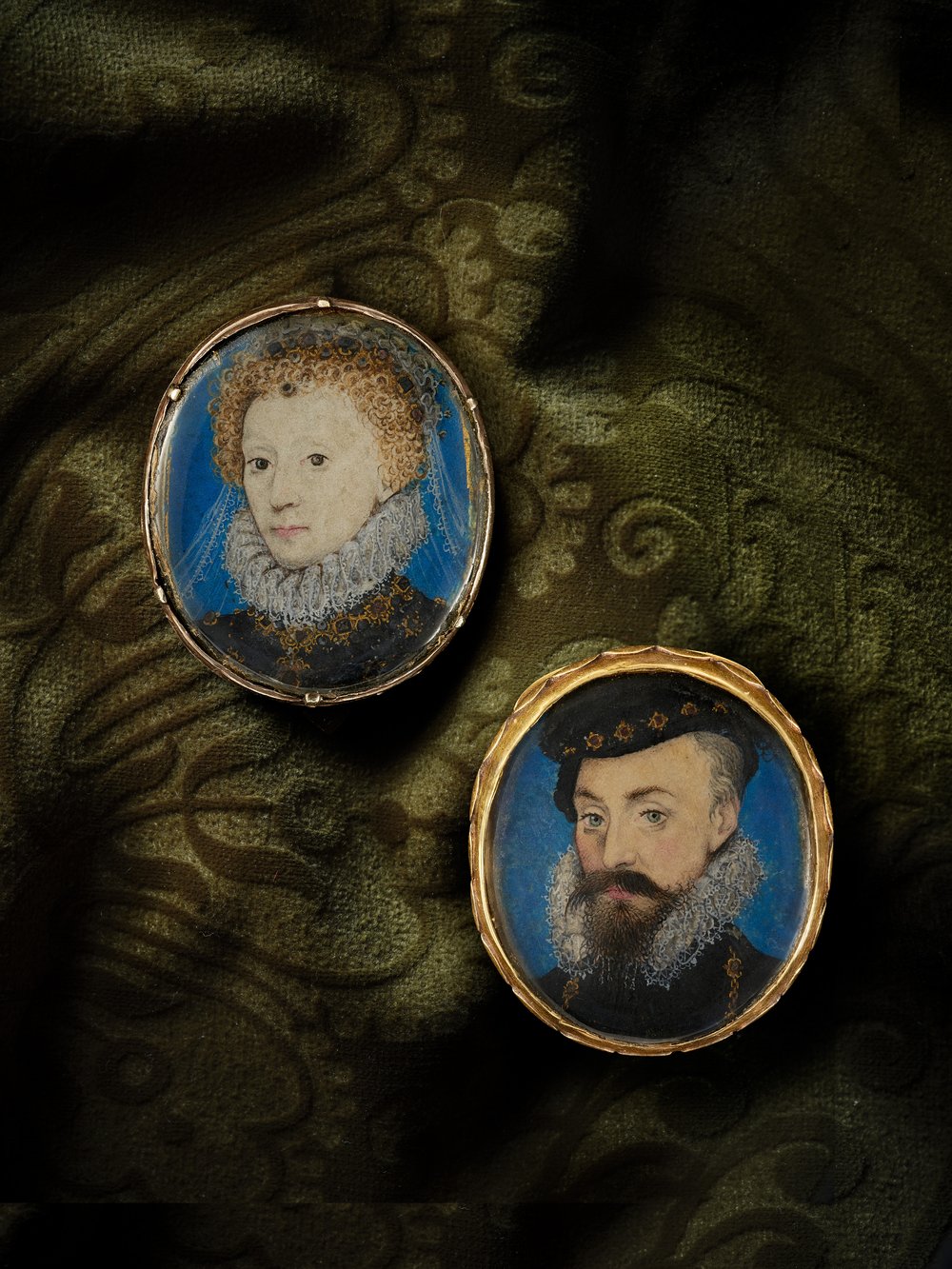
Fig. 1. Nicholas Hilliard (c.1547-1619), Elizabeth I (1533-1603) and Robert Dudley, 1st Earl of Leicester (1532-88), c.1575, watercolour on vellum [Private Collection, recently sold by The Limner Company] – currently exhibited in The Reflected Self: Portrait Miniatures 1540-1850
An extraordinary example of this romantic type of miniature is included in the Compton Verney exhibition, which would have once been amongst Queen Elizabeth I’s most personal possessions. A tiny, thumbnail-sized pair of miniatures by Nicholas Hilliard (c.1547-1619) [figure 1], depicting the queen and her ‘favourite’, Robert Dudley, 1st Earl of Leicester (1532-88). They would likely have been housed together in a locket, which, when closed, would place the portraits face to face. This intimate gift demonstrates the sitters’ close relationship as well as Dudley’s audacity in seeking to position himself as a suitor for the queen.
Aside from affairs of the heart, one might wish to conceal a miniature that conveyed dangerous political beliefs. Examples in the exhibition from the mid-to-late 17th century depict many of the leading protagonists of the English Civil War, Restoration and Glorious Revolution, and would have been used to reward or inspire loyalty and demonstrate allegiance. The production of miniatures of ordinary folk also proliferated during the turbulence of this period, as loved ones were separated by war.
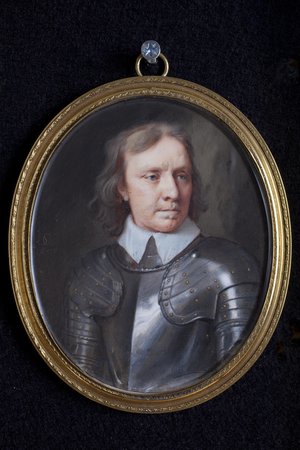
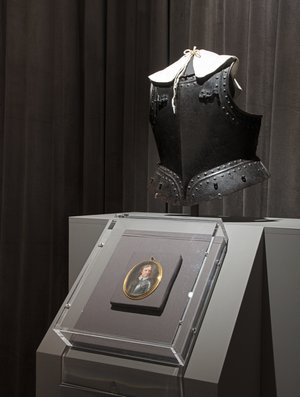
Fig. 2. Samuel Cooper (1607/8-72), Oliver Cromwell (1599-1658), 1657, Watercolour on vellum [Compton Verney Collection] – currently exhibited in The Reflected Self
Installation view of The Reflected Self. Both images © Compton Verney, photo Jamie Woodley
Whatever the nature of the commission, all miniatures were intended to reflect the true self. For the Puritan Oliver Cromwell, flattery was out of the question and it is from his instruction to the miniaturist Samuel Cooper (1607/8-1672) that the phrase ‘warts and all’ derives, although what Cromwell actually said was “pimples, warts and everything as you see me”.
Cooper’s portraits of Cromwell are considered among the best portraits ever produced in England, and a superb example from the Compton Verney Collection is included in the exhibition [figure 2]. Complete with warts and thinning hair, the miniature is displayed alongside a Civil War-era armour breastplate comparable to the one worn by Cromwell.
Costume plays a significant role in the exhibition as it does within the art form. From the genesis of portrait miniature painting, through to its eclipse in the age of photography, artists paid close attention to sitters’ dress. Miniaturists would paint portraits in the presence of the sitter, and not from a pattern or other source as was often the case with oil paintings. Even Elizabeth I sat to Hilliard, one of few accounts of her sitting for an artist. Gowns and jewels were made available to the artist to ensure accuracy – it could be important to sitters to convey their fashionable taste and/or showcase their wealth in their material splendour.
It was not uncommon for miniatures to show sitters in a state of undress either. An iconic Elizabethan image is the Victoria & Albert Museum’s portrait miniature by Hilliard of an unknown man among flames. It is a rare depiction of an Elizabethan gentleman wearing just his undershirt, open at the collar, revealing a great deal more skin that most male portraits of the age.
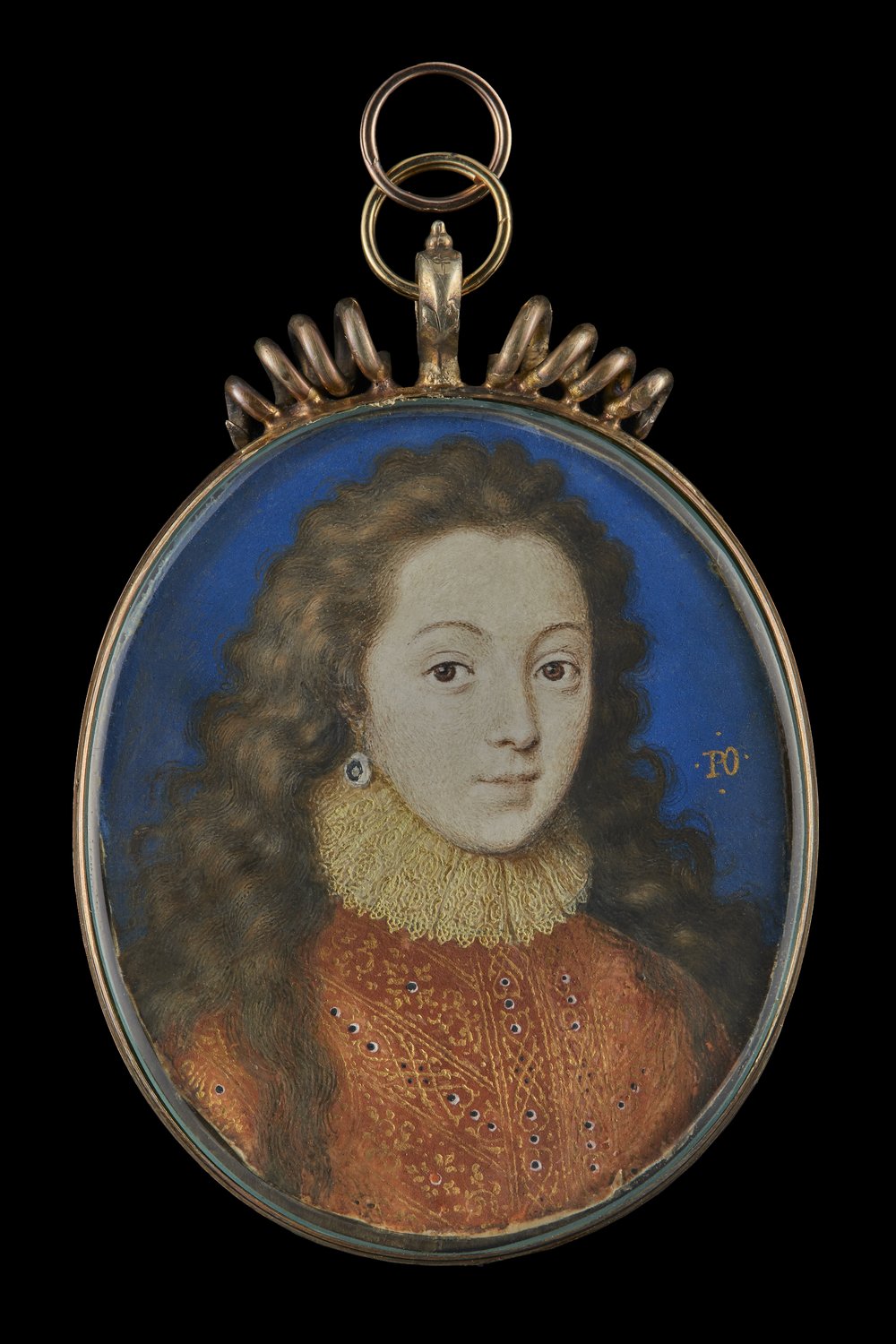
Fig. 3. Peter Oliver (1594-1648), Venetia Digby (née Stanley), Lady Digby (1600-33), c.1615-20, watercolour and bodycolour on vellum [Private Collection, recently sold by The Limner Company] – currently exhibited in The Reflected Self
Something as innocuous to the 21st-century viewer as a woman wearing her hair down was considered risqué if the woman was married. An example in the Compton Verney exhibition shows renowned Jacobean beauty, Venetia Digby (née Stanley) (1600-33) with her hair thus [figure 3], and it may have been exchanged as part of her betrothal. She also wears a rarely-seen yellow (saffron-dyed) ruff, an example of the fleeting fashions captured in miniature that were rarely included in other forms of portraiture.
More revealing still are the Elizabethan and Jacobean miniatures of women in masque costumes, sometimes with their breasts completely exposed. The dangerously low-cut bodice, loose hair and flower crown worn by Lady Dorothy Sidney (née Percy), Countess of Leicester (c.1598-1659) [figure 4] suggest her outfit was inspired by masque costume. The (later) frame of this portrait is glazed on the reverse to show the playing card was used as a support by the artist. Playing cards were used to reinforce the vellum onto which the portrait was painted at this early period. The choice of playing card used may be significant as part of a wider symbolic culture surrounding cards at this date.
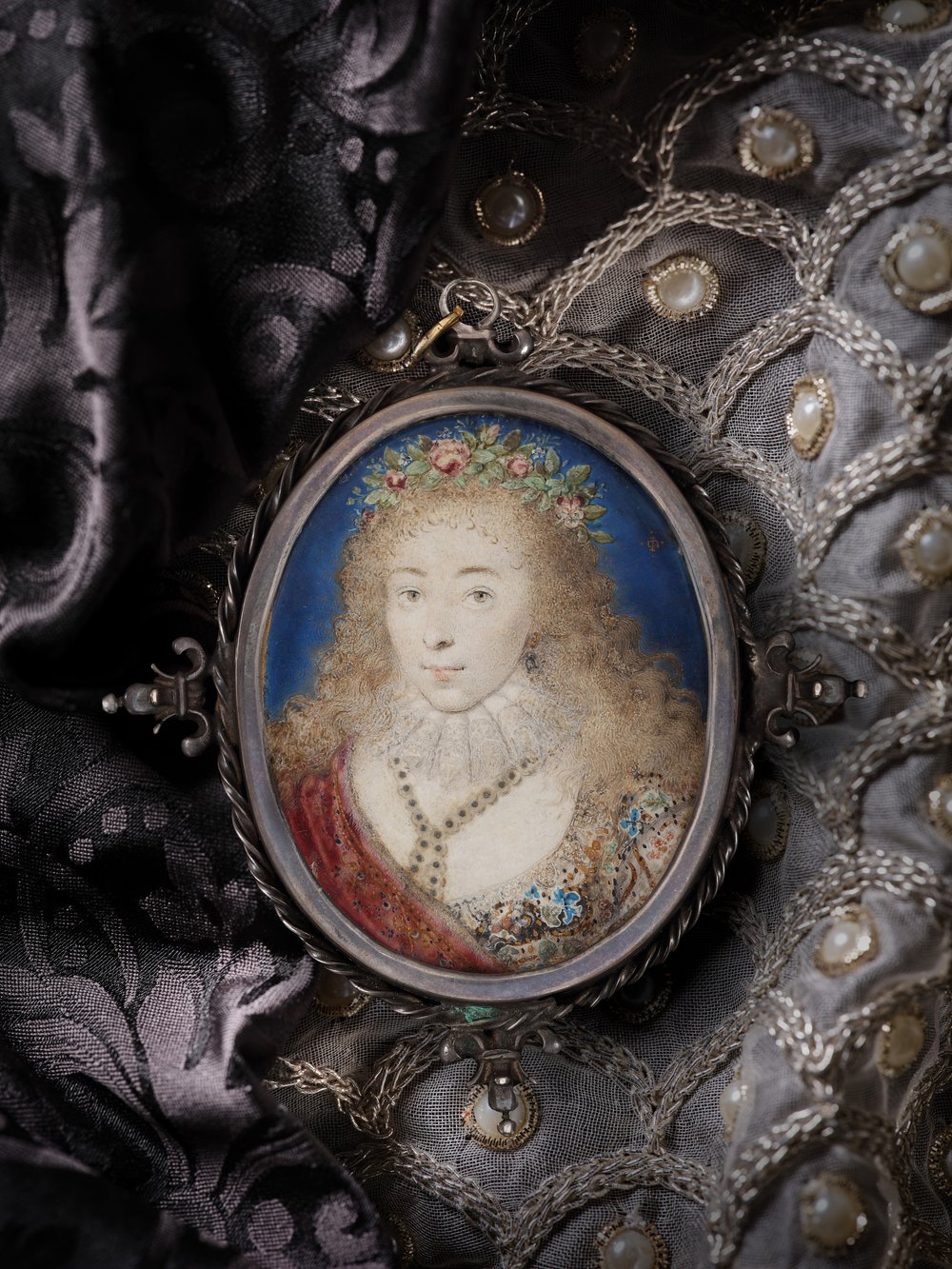
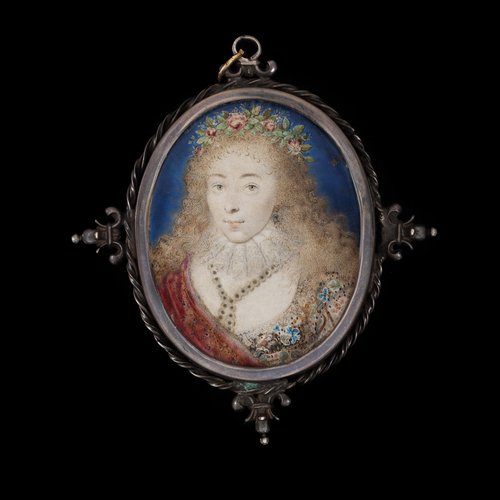
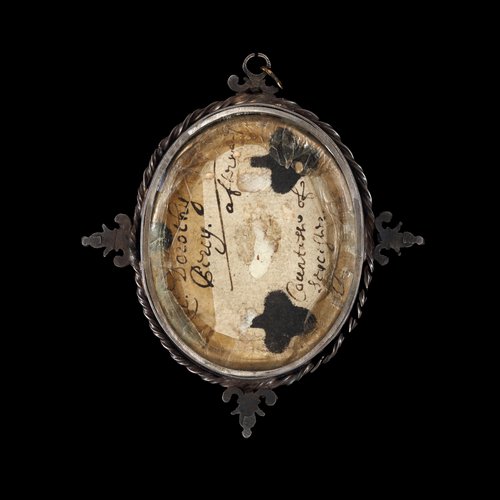
Fig. 4. Isaac Oliver (c.1565-1617), Lady Dorothy Sidney (née Percy), Countess of Leicester (c.1598-1659), c.1615, watercolour on vellum [Private Collection, recently sold by The Limner Company] – currently exhibited in The Reflected Self
Perhaps the most shocking fashion to be seen in the exhibition are the two portraits by John Smart (1741-1811) of gentlemen with pink hair - both wear wigs coloured by hair powder [figure 5]. Wigs began to be powdered white at the beginning of the 18th century, but coloured powders, in pink, blue and lilac, were a short-lived craze of the 1770s-80s. As such, and likely considered too informal for other forms of portraiture, coloured hair powder is near exclusively seen in portrait miniatures and fashion prints. Smart’s oeuvre depicts more pink-haired sitters than any other artist [see figure 6 for another example] and it may be that he had a particular interest in hairstyles owing to his father’s profession as a peruke (wig) maker. His work is forensic in detail and another portrait in the exhibition shows the sitter with a dusting of hair powder having fallen onto his collar and shoulders [figure 7].
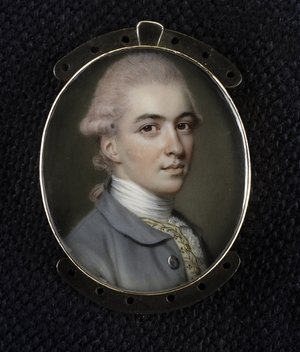
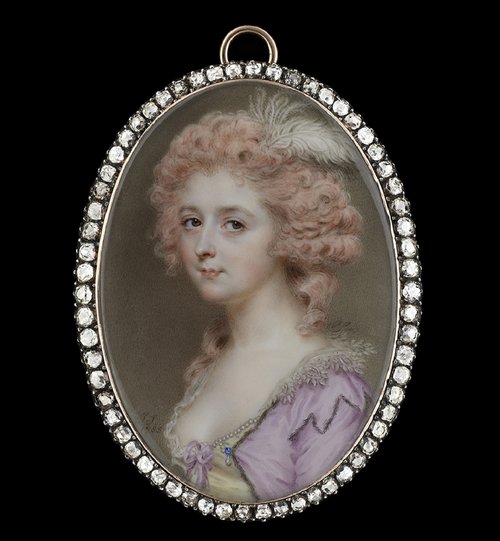
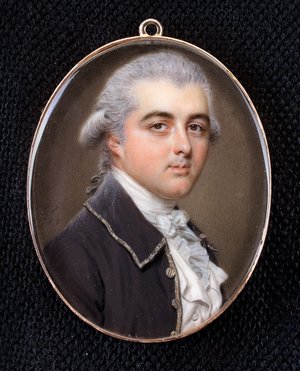
[Left] Fig. 5. John Smart (1741-1811), Unidentified Gentleman, probably of the Parker family, 1772, watercolour on ivory [Compton Verney Collection] – currently exhibited in The Reflected Self © Compton Verney, photo Jamie Woodley
[Centre] Fig. 6. John Smart (1741-1811), A Lady, 1785 [previously sold by The Limner Company]
[Right] Fig. 7. John Smart (1741-1811), Unidentified Gentleman with hair powder on his collar, 1783, watercolour on ivory [Compton Verney Collection] – currently exhibited in The Reflected Self © Compton Verney, photo Jamie Woodley
The heyday of the portrait miniature is considered to be this late Georgian period, when they had become almost ubiquitous among the burgeoning middle classes. The war in Europe and America, as well as increasing trade in far-flung climes and the popularity of the Grand Tour, saw great demand for miniature portraits of men in uniform and ‘coming of age’ portraits of young men. Infant mortality was also high and it was common practice to commission portrait miniatures of very young children.
The commemorative aspect of these miniatures was taken a step further with the inclusion of real human hair in miniatures’ frames. Usually seen in a glazed panel on the reverse of the frame [figure 8], sometimes surrounding the portrait itself [figure 9], or even braided into a bracelet or necklace to which the miniature was attached, the hair gave miniatures a relic-like quality. At a time when most people wore wigs or hair powder in public, including a lock of the sitter’s hair - revealing their natural hair colour - was an especially intimate gesture. Indeed, an etiquette developed around the practice of gifting hair.
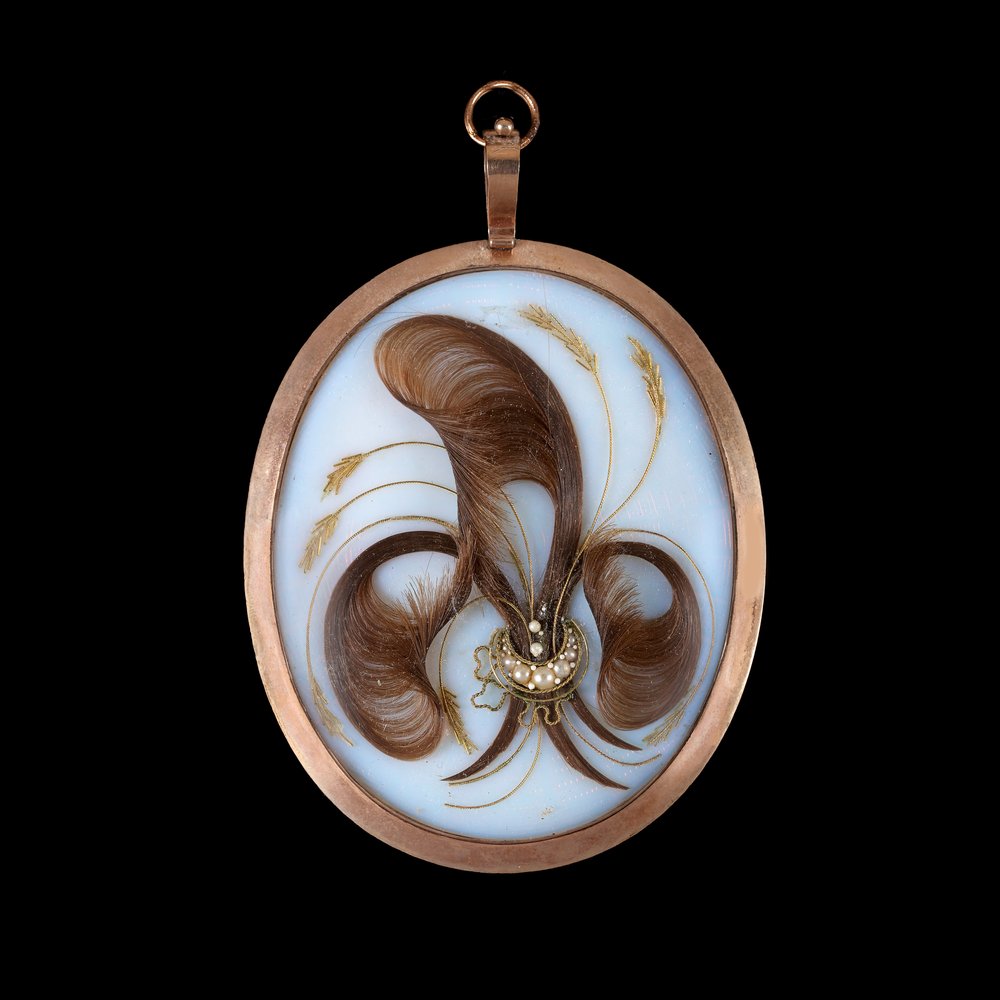
Fig. 8. George Engleheart (1750-1829) Miss Sarah Shergold, 1795, the reverse with locks of hair tied with split pearls and gold wire on opalescent glass [for sale with The Limner Company]
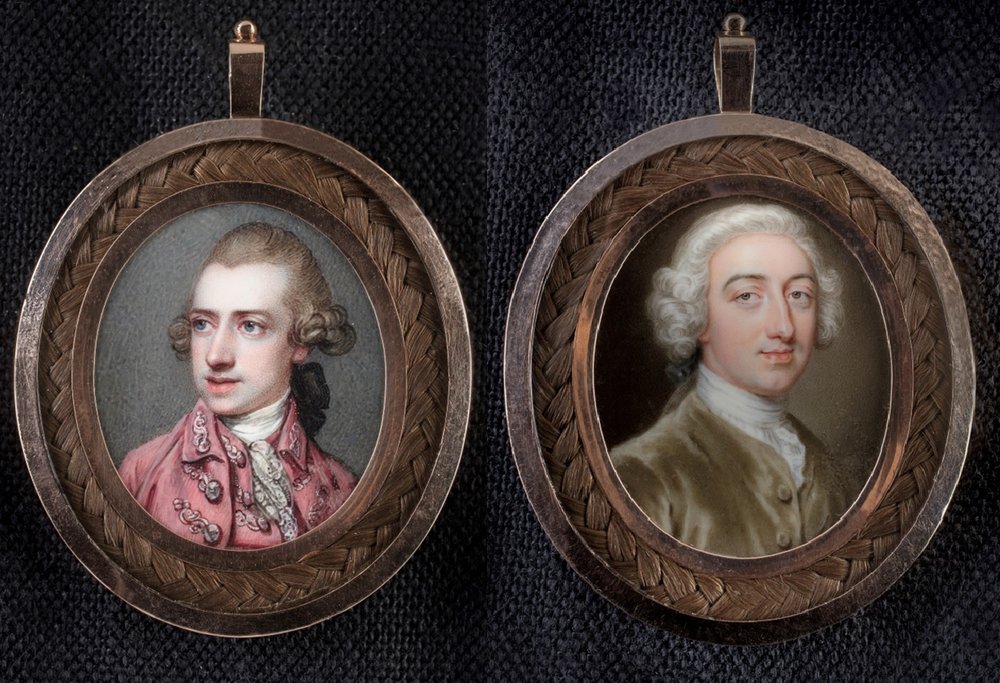
Fig. 9. [Left] Richard Cosway RA (1742-1821) and [right] John Smart (1741-1811) (possibly after Christian Friedrich Zincke, c.1683-1767), a double-sided portrait miniature of Two Unidentified Gentleman, c.1775, watercolour on ivory, the frame with plaited hair surround [Compton Verney Collection] – currently exhibited in The Reflected Self © Compton Verney, photo Jamie Woodley
The relationship between the recipient of the miniature and the sitter might also be one of friendship. Women were the primary wearers of miniatures and popular female accessories such as a lace-making shuttles and carnets-de-bal (dance card holders) [see figure 10] came to incorporate miniature portraits too. In this way miniatures could be used as part of a person’s social capital, advertising a connection to a certain individual.
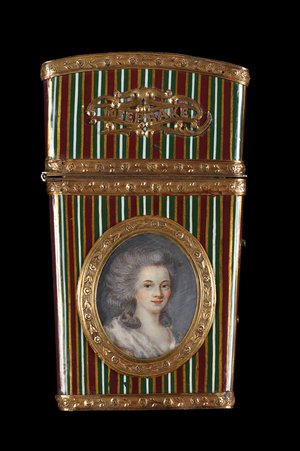
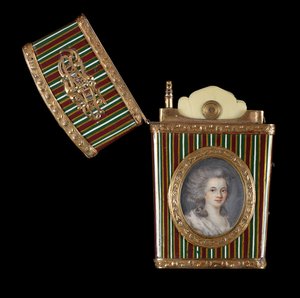
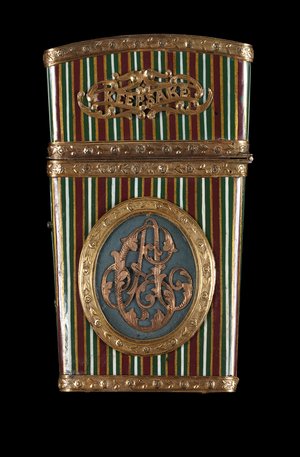
Fig. 10. French School, Portrait miniature of a Lady set into a carnet-de-bal, c.1785, watercolour on ivory and vari-coloured gold and painted papier-mache [previously sold by The Limner Company]
In short, the study of portrait miniatures could be likened to browsing through historical social media. The ephemeral nature of the images enabled them to capture things that were not considered appropriate for other forms of portraiture intended for posterity. This aspect of the portrait miniature and their their highly personal nature, make them the most compelling form of portraiture and more than worthy of the spotlight shone on them in this exhibition.







